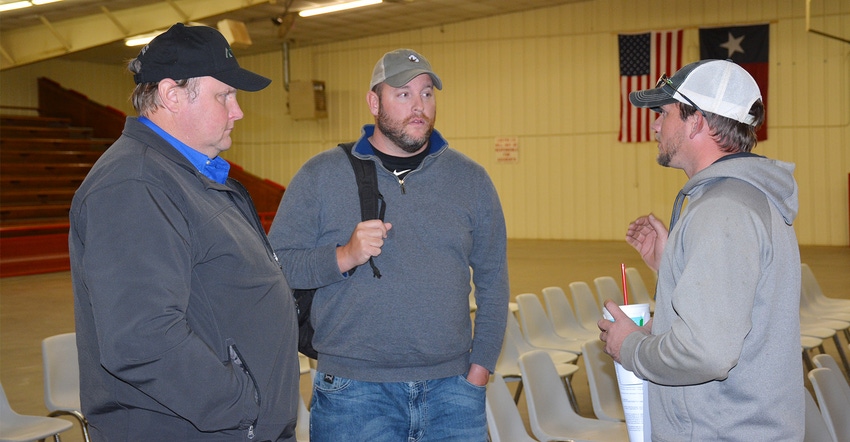
Corn growers have no silver bullet to treat or prevent fumonisin, according to Dr. Jason Woodward, Extension Plant Pathologist with Texas A&M University in Lubbock. But they do have tools in the tool box they can use to reduce the risk.
Fumonisin is a toxin produced by a fungus, Fusarium verticillioides, which is widely distributed through most corn-producing regions and becomes an issue whenever environmental conditions favor infection and development of the disease, says Woodward, who spoke at a fumonisin meeting for growers sponsored by the Texas Corn Producers and the Texas A&M AgriLife Extension Service at Dimmitt, Dec. 18.
“We are actually processing all of our samples now for fumonisin levels and I’m encouraged with what we see,” says Woodward. “I’m a little surprised that we’ve found relatively high or appreciable levels of the toxin from samples that came from a research field in Lubbock County that’s never been planted to corn. So, I think that’s one of the issues that we have moving forward. No one is completely safe.”
While fumonisin is not new to the High Plains, stressful conditions such as hot dry weather at flowering, followed by rain and high humidity late in the season, favored greater fungal growth in 2017, creating the perfect storm. “It was actually two perfect storms. In order for the fungus to cause problems resulting in fumonisin, we have to have conditions during the developmental stages of the plant that predispose that plant to infection. And when we have environmental conditions later in the year that are conducive for the accumulation of that toxin, that’s exactly what we saw,” says Woodward.
While there is no surefire cure for the disease, one of the tools a grower can use to manage fumonisin is reviewing long-term forecasts, and if warranted, adjusting their planting date. “We might be able to look at a long-term forecast and at least get an idea if we are looking at an elevated risk of fumonisin,” says Woodward. “So, if we can augment our planting dates and avoid those conditions where the plants are stressed by the environmental conditions, then we might be able to limit the impact of something like fumonisin.”
This fungal disease forms when temperatures are 50 to 86 degrees Fahrenheit and can rapidly develop when those temperatures fluctuate.

Producers and industry professionals gather in Dimmitt, Texas, for an informational meeting about fumonisin, sponsored by the Texas Corn Producers and Texas A&M AgriLife Extension Service.
The biggest defense, according to Woodward, is hybrid selection. He suggests choosing hybrids that are resistant or tolerant to Fusarium ear rot, a disease often associated with the accumulation of and development of fumonisins, while also considering husk characteristics. For example, a tight husk versus an open husk would limit movement of the fungus into the ear.
“If you have an open husk, it is capable of being invaded more easily than a closed husk,” says Woodward. “What we’ve also found, is where we have those open husks with the upright ears, if you have infections that take place and then rainfall, that rainfall or high humidity may accumulate in the bottom of the ear. That’s just like an incubation chamber where that fungus likes to grow. It’s like bread in a bag. If there’s air and moisture in a bag, it’s eventually going to get moldy. Those are the same types of conditions that often occur in that lower husk.”
Insect management is another principal way to manage fumonisin. “As we limit the amount of insect damage, we also see a reduction in the amount of fusarium ear rot,” Woodward adds. “But just because you have ear rot, does not mean you have fumonisin.”
Woodward stresses that there are no standalone measures to manage this disease. “We really feel that as we move forward, developing an integrated disease management approach is the best way to limit the risk of fumonisin issues.”
About the Author(s)
You May Also Like






